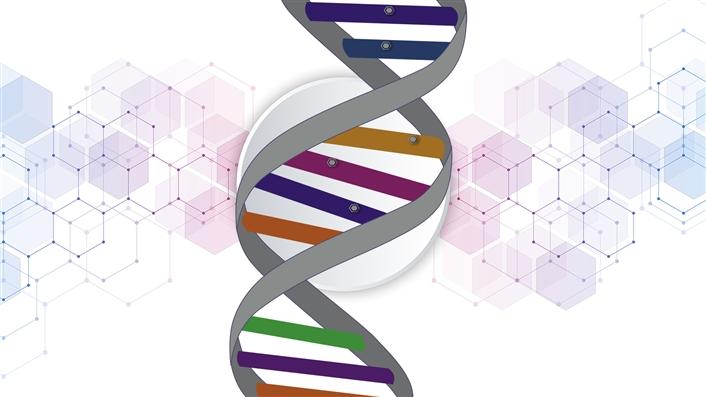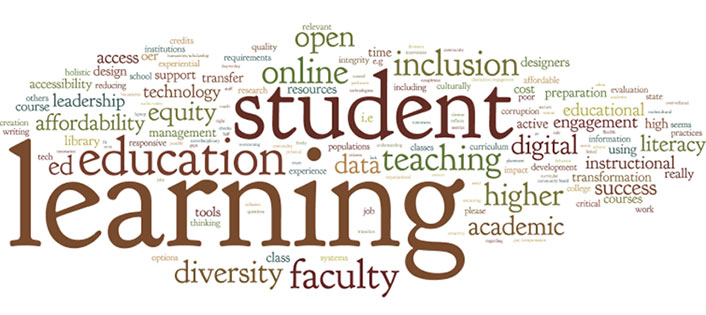Each year, the EDUCAUSE Learning Initiative surveys the higher education community on key issues and opportunities in postsecondary teaching and learning, the results of which serve as the framework for discussions and programming throughout the coming year.

The EDUCAUSE Learning Initiative (ELI) continues its annual Key Issues in Teaching and Learning survey. We have tallied the results for 2019 and are pleased to present them to the community. Our Key Issues web page is now fully updated and ready for review.
Presenting the most significant issues, by the numbers: For those interested in exploring our longitudinal data, we have also updated the spreadsheet that contains all Key Issues survey results from 2011 through this year. This spreadsheet now contains two tabs: the first tab lists the overall rankings for each year, and the second tab lists the demographic information of the respondents. (Note: We began collecting demographic information in 2017, so this second tab presents results for the years 2017–19.) You may want to open the spreadsheet and follow along as we go on a brief tour of the 2019 results.
Celebrating a record-breaking year for community participation: Our team is especially delighted by the number of responses received for the 2019 survey. We worked across many EDUCAUSE community groups and with a number of partner organizations to encourage as much input as possible. Participation has always been open to anyone associated with postsecondary teaching and learning, irrespective of their institution's membership status in EDUCAUSE. For 2019, we set a substantial new record in terms of total survey responses: 1,449, representing a 54% increase over our previous record high of 940. We'd like to thank the entire teaching and learning community for such widespread participation; the magnitude of the response lends further credence to the final results.
The results of each year's Key Issues survey show priority shifts of both high and shallow amplitude, and 2019 is no exception. While noting these shifts is always of interest, accounting for them can be a matter of speculation. Here are some results that caught my eye, with a few speculations tossed in:
- The issue of faculty development reclaimed the top spot. Since 2014, this issue has consistently appeared in the top three, and so it has again for 2019. What is remarkable is not so much its #1 finish (it was #1 in 2017); rather, it's that faculty development received 25% more votes than the second-place issue, online and blended learning. This represents the largest margin between two adjacent issues that we've ever recorded for this survey, underscoring the importance of this issue to the community.
- Academic transformation, previously a consistent top-three finisher, took a tumble in 2019 down to 10th. I suspect that more practical concerns and practices are at the forefront of the teaching and learning community for 2019, which likely accounts for this shift.
- After falling to 16th last year, the issue of competency-based education and new methods of learning assessment jumped up to 6th for 2019. It's now close to its 2017 position. This issue is one of the more conspicuous aspects of academic transformation. Its "reassertion" could mean that it remains an important vehicle for transformation, as it is one way a learner's accomplishments can remain relevant long after the learner has graduated.
- The issues of accessibility and universal design for learning (UDL) and of digital and information literacy held more or less steady. The former remains in the top five for the third consecutive year, while information literacy rose one step to 4th in 2019. This clearly indicates that these issues and their impact on student experience remain important and in the foreground for the community.
- Online and blended learning has rebounded significantly. After falling over the past few years (4th in 2016, 7th in 2017, and 8th in 2018), it's in the #2 position for 2019, where it ranked back in 2014. Hazarding a guess, I think this means that there is still a fair amount of innovation and experimentation in this area, perhaps fueled a bit by adaptive learning. I'd be curious as to what others think about this.
As mentioned above, we're now sharing the response demographics for the first time in the results spreadsheet. The most important finding from this information is that a surprising level of agreement exists across institutional types about the most important issues we're facing today. In the teaching and learning community, we have all encountered the tendency for us to think that institutional types are separate and unique and that what is on the minds of colleagues at, say, research institutions has very little overlap with the concerns of colleagues at two-year institutions. I would suggest that the demographics of the Key Issues surveys rebuts this impression, at least to some extent. Indeed, in the three years we've been tracking demographic data, I've been surprised by the degree of congruence of these issues across institutional types. It suggests that we, as the teaching and learning community in higher education, have a lot more in common than we might initially think.
One Key Issues tradition is to include space on the survey instrument for respondents to offer suggestions for additional issues or just general commentary. About 120 respondents (roughly 8% of the total) offered responses this year. I bundled the responses together and generated this word cloud:

The fact that the two "loudest" words are learning and student comes as no surprise. Through a variety of indicators (such as the EDUCAUSE 2019 Top IT issues survey), we know that student success is looming ever larger as a priority for our institutions. The focus on learning reflects the community's priority on the academic success of our learners. Learning clearly overlaps with student success—while true student success depends on a range of factors and priorities, few would dispute the notion that academic success is most central to the student success equation. Some of the other prominent words in the cloud (such as inclusion, equity, affordability, literacy, open, and leadership) also bring into relief important issues very much at the center of postsecondary teaching and learning practice.
Please visit the Key Issues web page, and feel free to grab (and share!) a copy of our newly released 2019 infographic. Again, many thanks to everyone who participated in the 2019 survey. Your participation enables us to come together as a community and identify the key areas that can serve as the focus of our support for higher education's teaching and learning mission.
Malcolm Brown is Director of Learning Initiatives at EDUCAUSE.
© 2019 Malcolm Brown. The text of this work is licensed under a Creative Commons BY-NC-ND 4.0 International License.
